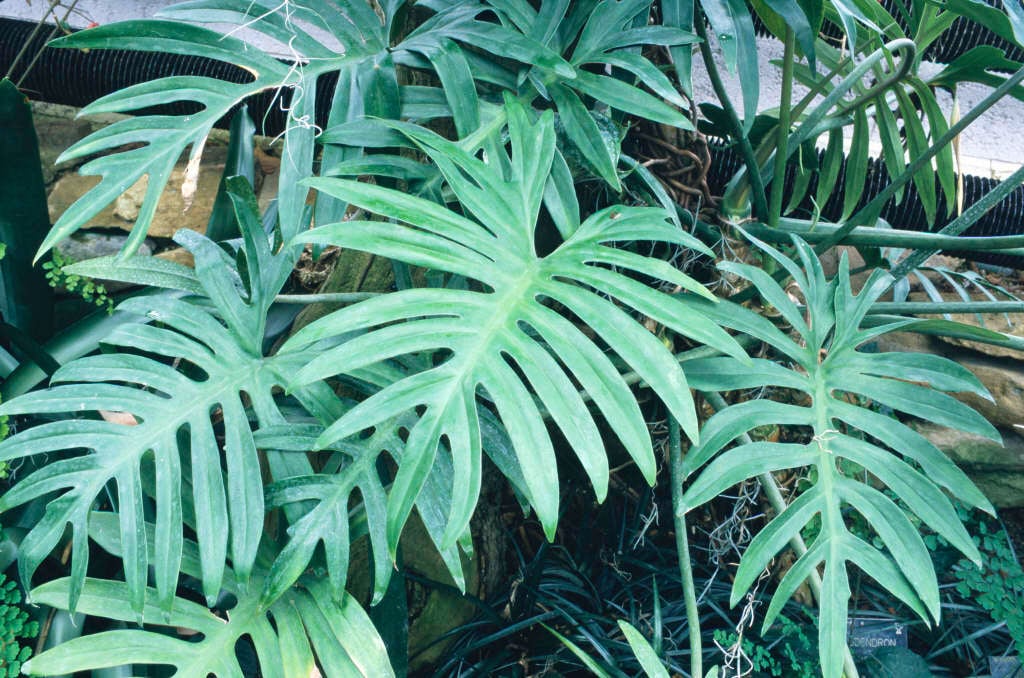Size
Ultimate height
4–8 metresTime to ultimate height
5–10 yearsUltimate spread
0.5–1 metresGrowing conditions
Moisture
Moist but well–drainedpH
Acid, Alkaline, NeutralColour & scent
| Stem | Flower | Foliage | Fruit | |
| Spring | Green | |||
|---|---|---|---|---|
| Summer | Green Pink | Green | ||
| Autumn | Green | |||
| Winter | Green |
Position
- Partial shade
Aspect
South–facing or East–facing
Exposure
Sheltered Hardiness
H1ABotanical details
- Family
- Araceae
- Native to GB / Ireland
- No
- Foliage
- Evergreen
- Habit
- Climbing
- Potentially harmful
- Harmful if eaten, skin/eye irritant/allergen. Wear gloves and other protective equipment when handling Pets: Harmful if eaten, skin/eye irritant/allergen - For further information and contact numbers regarding pets, see the HTA guide to potentially harmful plants
- Genus
Philodendron can be shrubs, trees or climbers, with glossy, leathery, evergreen, simple to pinnately divided leaves, and tiny flowers borne within arum-like white, green or reddish spathes
- Name status
Correct
- Plant range
- S America
How to grow
Cultivation
Grow under glass in a peat-free, loam-based potting compost in bright filtered light with shade from hot sun, mist daily. When in growth water moderately and apply a balanced liquid fertilizer monthly. Water sparingly at other times. See Philodendron and houseplant cultivation for further advice
Propagation
Propagate by seed surface sown at 19 to 24°C in spring or layer in spring
Suggested planting locations and garden types
- Patio and container plants
- Low Maintenance
Pruning
Pruning group 11 in spring
Pests
May be susceptible to scale insects and glasshouse red spider mite
Diseases
Generally disease-free
Get involved
The RHS is the UK’s gardening charity, helping people and plants to grow - nurturing a healthier, happier world, one person and one plant at a time.
